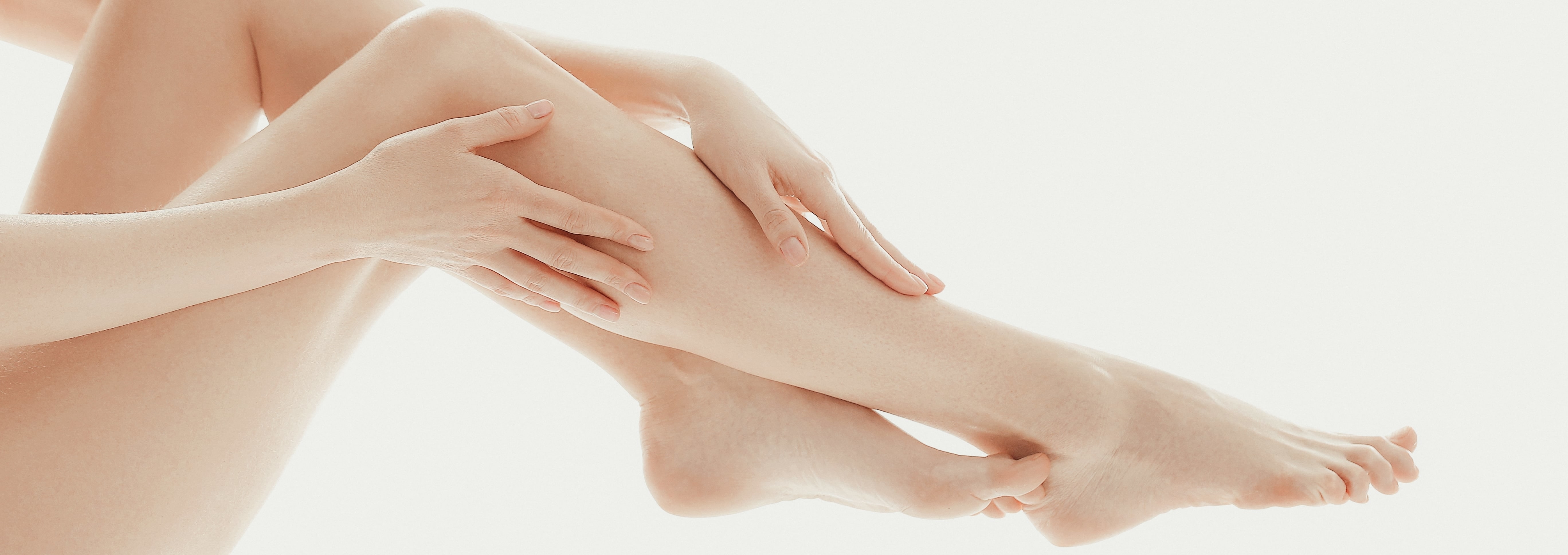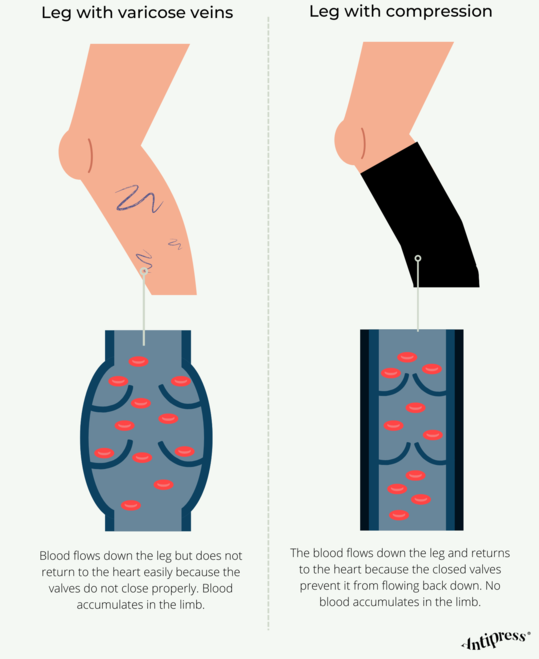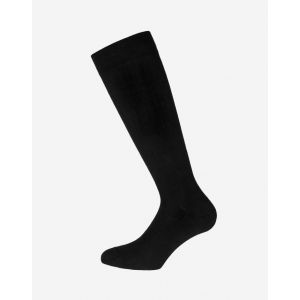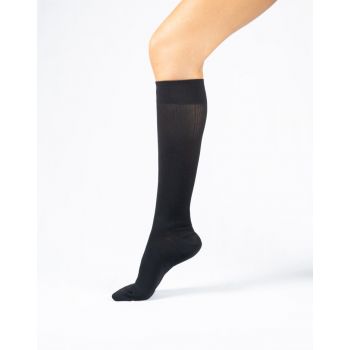Compression socks · All you need to know


Wearing compression stockings is one of the most effective measures to prevent and reduce pain due to venous insufficiency in the legs. We answer the most frequently asked questions.
Why do compression socks work?
Compression socks are textile garments that gently press on the leg, thus improving blood flow and reducing pain and swelling in the area. The part with the most pressure is the ankle and it is gradually reduced until it reaches the knee to help with venous return, which is the flow that returns deoxygenated blood to the heart.
Many people suffer from venous insufficiency in the legs and this problem causes too much blood to accumulate in the limbs. This is explained by the widening of the veins, which damages the valves that are inside the walls of the veins. Healthy valves open so blood can flow freely to the heart and close so it doesn't back up, but in venous insufficiency, the valves don't close properly and therefore don’t let the blood flow in the return direction.
Venous insufficiency manifests itself with intense pain and heaviness in the legs. It can also cause bloating and cramps. These discomforts affect the quality of life and can become dangerous. Compression socks can be very helpful in preventing and reducing pain.


Who are compression socks for?
There are different situations in which people can benefit from the use of compression socks. Spider veins and varicose veins are common. Both are twisted veins that hinder venous return. The former are usually red and inconspicuous, but varicose veins tend to have more volume and blue tones. In both cases, compression socks can reduce pain, causing the veins to tighten to return blood to the heart and thus avoid excess blood in the legs.
Another circumstance in which compression is recommended is the appearance of leg cramps. They can be accompanied by a tingling sensation and both discomforts can indicate difficulties in blood circulation. Cramps are contractions in the muscles that occur due to a lack of oxygen, which is carried by the blood.
Heaviness in the legs themselves or even a change in colour in some areas of the feet and legs are also clear symptoms of circulatory failure. It is important that you consult with your doctor to treat it properly. Especially in older people, another common problem due to lack of blood flow is poor wound healing. The time needed for them to heal is much longer than in younger people and can lead to the appearance of ulcers. Subjects with diabetic feet also suffer from a reduction in blood circulation and it is very normal that in phases of pregnancy they also suffer from difficulties in venous return.
In short, the lack of circulation in the legs in adults is common. If you suffer from any of the symptoms mentioned, it is highly recommended that you notify your doctor. In any case, when the problem is mild and major problems can still be avoided, you should consider the option of wearing compression socks so that the affected veins are pressed and can transport blood more easily to the heart. If on a daily basis you spend many hours on your feet or take long plane trips, controlled compression will also be very favourable for you.
What length of compression sock do I need?
Compression socks are garments that generally reach the bottom of the knee to provide good coverage for the calf area. They are designed for people who have venous insufficiency in the part of the leg that goes from the knee to the foot. When cramps, swelling and varicose veins appear in this area, compression socks put pressure on the veins and improve return circulation.
However, there are also people who suffer more in the thigh area. If you are looking to notice compression in this region, you should equip yourself with compression stockings that reach the upper part of the thigh. There are options that are fastened right there and others that have the support at the waist.
Sometimes you will find compression socks with open toes, which avoid possible excess pressure on the toes.
What compression do I need in the sock?
There are two key aspects when choosing compression socks. The first one is the compression level and the second one is the size. Doctors recommend compression depending on the degree of insufficient blood flow to the legs. It is measured in millimetres of mercury (mmHg):
- Between 15 and 20 mmHg: This is a low compression range. It is recommended to prevent and reduce the pain of tired or slightly swollen legs. It is also a good option for minor varicose vein situations.
- Between 20 and 30 mmHg: Here the compression is already moderate. It is recommended in more serious circumstances of varicose veins or to treat lymphedema.
- Between 30 and 40 mmHg: Strong compression. It is more appropriate for people suffering from ulcers and post-thrombotic syndromes.
As for the size, there are two measurements that you must take in order not to make a mistake: the circumferences of the calf and the ankle. All the brands that sell compression socks have a size guide that is based on these two points on the leg to help you choose the right sock for you. It is important that you try to take these measures first thing in the morning, so that you avoid doing it with swollen legs, after your workday.
How to put on compression socks?
Compression socks can be worn on only one leg, if the circulatory problem affects one of the two, or both, to a greater extent. It is normal and necessary to feel difficulties when putting them on, but you will get used to it. Try to enter the foot first and then pull the fabric until you reach the top. You must make sure that there are no wrinkles or folds so that it is pressed correctly. If you have great difficulty fitting them, there are compression stocking shoehorns to make it easier.
How long should I wear compression socks?
There are people who prefer to wear compression socks every day to be comfortable, reduce pain and prevent possible complications. Also, there are people who buy them to recover from an operation or take a long trip or exercise. In all cases, a benefit in venous return is noted. It is entirely advisable to wear them from morning to night. However, it is not recommended to use them to sleep except in cases of thrombosis or ulcers.



